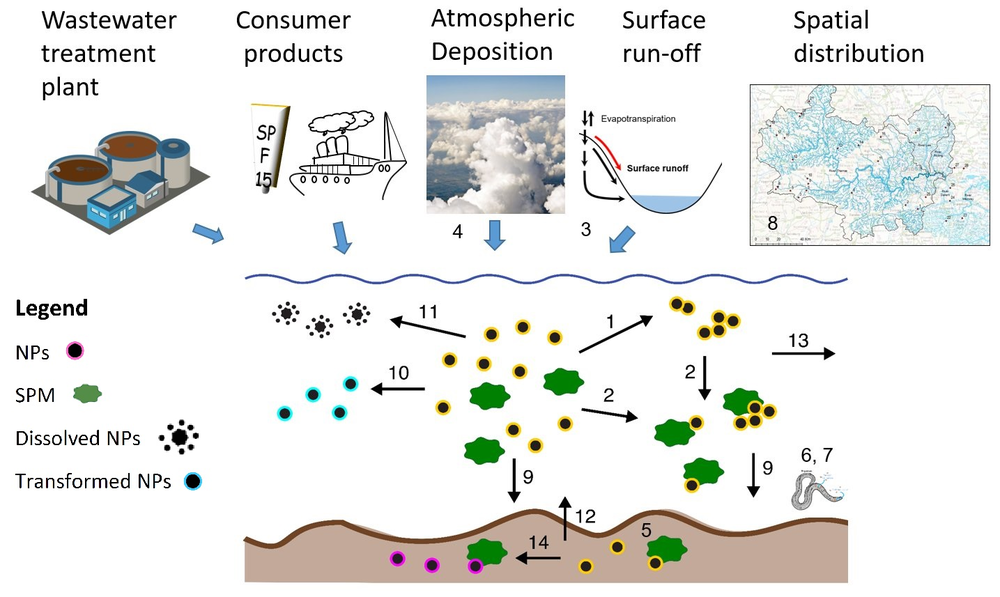Environmental Fate of ENMs: Water and Sediments Compartment
Water is exposed to ENMs mainly via inputs from surface runoff, atmospheric deposition (wet and dry), consumer products and wastewater treatment plants. ENMs can undergo different transport and transformation processes in the aquatic environment, depending on both intrinsic features of ENMs and extrinsic physicochemical parameters of the water medium. The transported and transformed ENMs may pose a potential risk to living organisms.

1. Homoaggregation
2. Heteroaggregation
3. Surface runoff
4. Air-water interaction
5. Attachment
6. Bioturbation
7. Bio-uptake
8. Spatial distribution
9. Sedimentation
10. Sulfidation
11. Dissolution
12. Resuspension
13. Advective transport
14. Redox transformations
Case studies |
Read also |
|
Praetorius, A. et al (2012). Development of environmental fate models for engineered nanoparticles--a case study ofTiO2 nanoparticles in the Rhine River. Environmental Science & Technology, 46(12), 6705–6713. https://doi.org/10.1021/es204530n Nowack, B. et al (2012). Potential scenarios for nanomaterial release and subsequent alteration in the environment. Environmental Toxicology and Chemistry, 31, 50–59. https://doi.org/10.1002/etc.726 |
Contact
 Frank von der Kammer
Frank von der Kammer
University of Vienna, Austria
Email: frank.von.der.kammer@univie.ac.at
